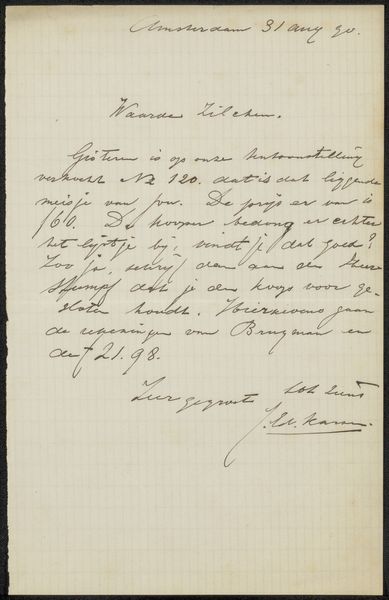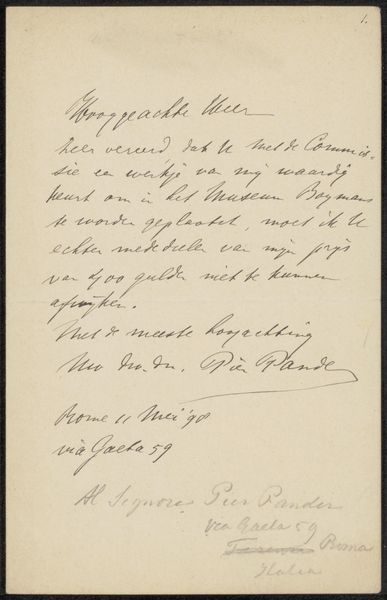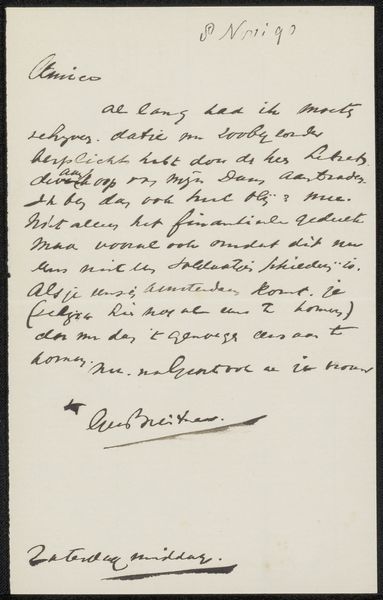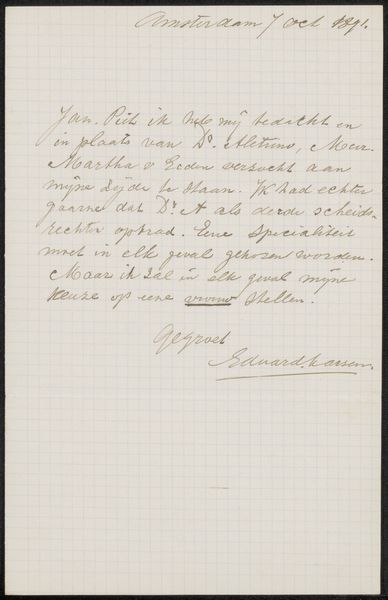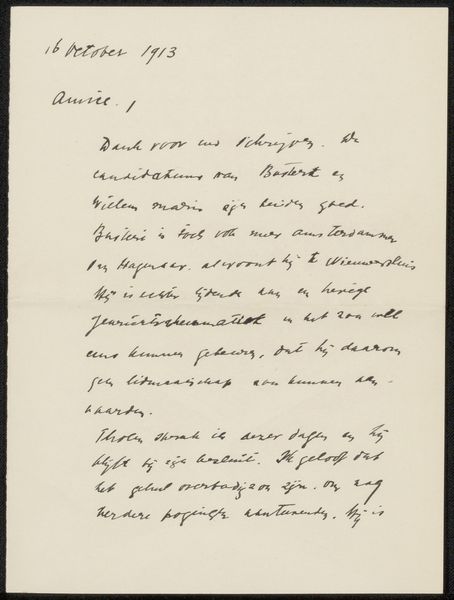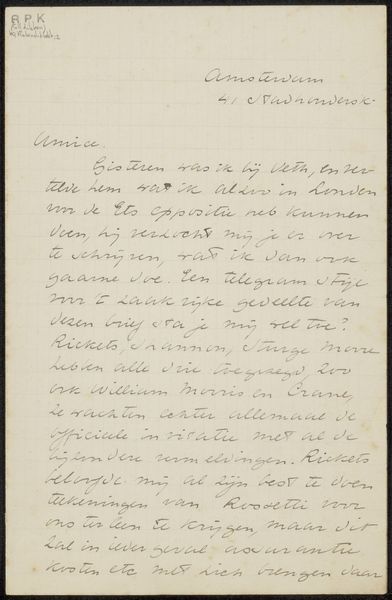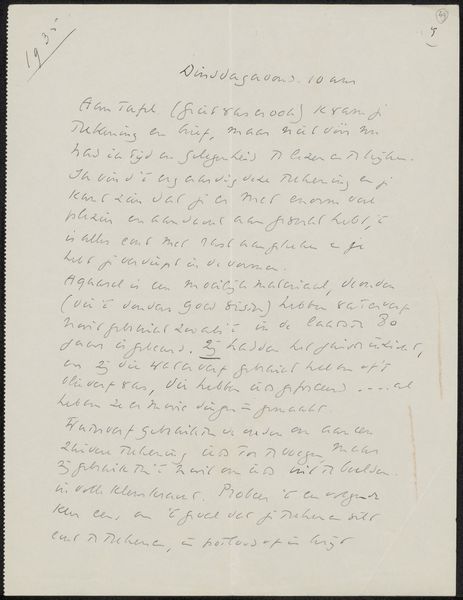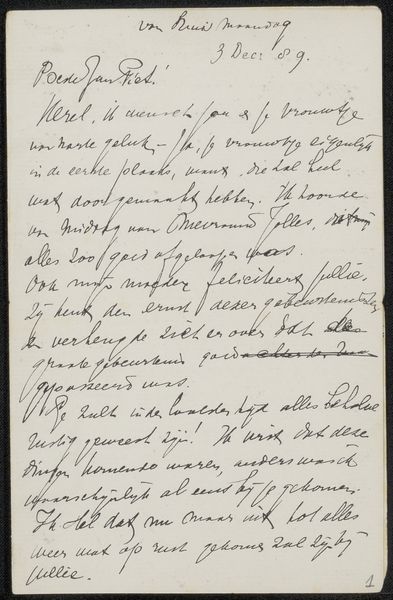
drawing, paper, ink, pen
#
portrait
#
drawing
#
script typography
#
hand-lettering
#
old engraving style
#
hand drawn type
#
hand lettering
#
paper
#
personal sketchbook
#
ink
#
hand-drawn typeface
#
pen-ink sketch
#
pen work
#
sketchbook drawing
#
pen
#
post-impressionism
Copyright: Rijks Museum: Open Domain
Editor: So, here we have "Brief aan Jan Veth," possibly from 1899, by George Hendrik Breitner, using pen and ink on paper. The handwriting is beautiful, but it’s so difficult to read! What do you make of it? Curator: It's tempting to dismiss this as a simple personal letter, but let's consider the context. Breitner was deeply engaged with representing everyday life in Amsterdam. How might this seemingly private correspondence, shared in a public collection like the Rijksmuseum, speak to broader social dynamics of artistic exchange and intellectual community? Editor: I see what you mean. It's not just a note; it's a piece of his world that we’re now privy to. But it’s still hard to decipher. Curator: Precisely! This illegibility itself becomes interesting. Whose voices are historically privileged and easily accessible, and whose are obscured, requiring us to work harder to understand? Even the grid on the stationary suggests the societal structures underlying artistic expression. What does the intimate peek of personal communication on paper provide, considering the male artistic dominance of that time? Editor: That makes me think about who Jan Veth was, too, and what their relationship was like. Maybe it challenges some of our assumptions about male artistic collaboration? Curator: Exactly! What power dynamics are at play here? Do we assume that as a 'letter' written on stationary by one artist to another this work could symbolize friendship or professional collaboration during the Post-Impressionistic art movement? Editor: I never would have thought about a letter in this way. There's so much more here than just ink on paper. Curator: Yes. Everyday objects, even a letter, become portals to understanding broader historical narratives, prompting us to ask critical questions about artistic identity and the construction of knowledge.
Comments
No comments
Be the first to comment and join the conversation on the ultimate creative platform.
